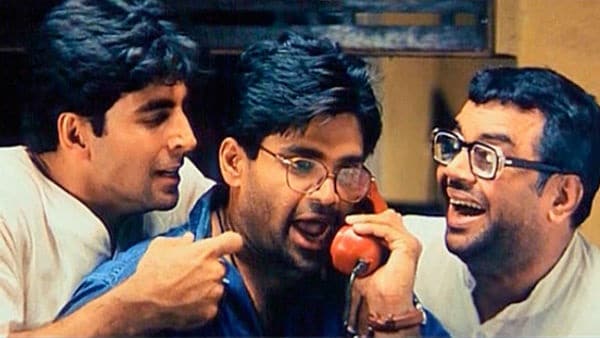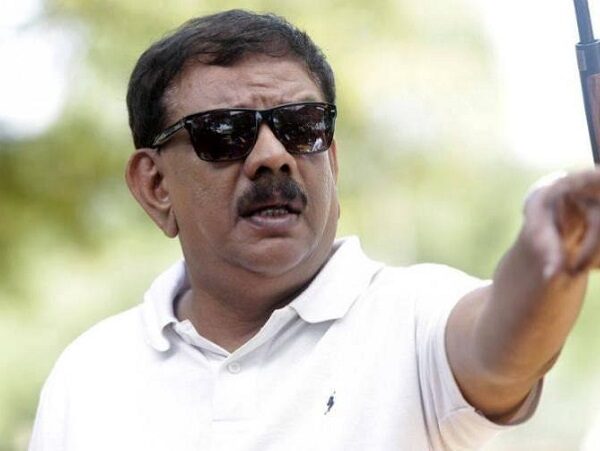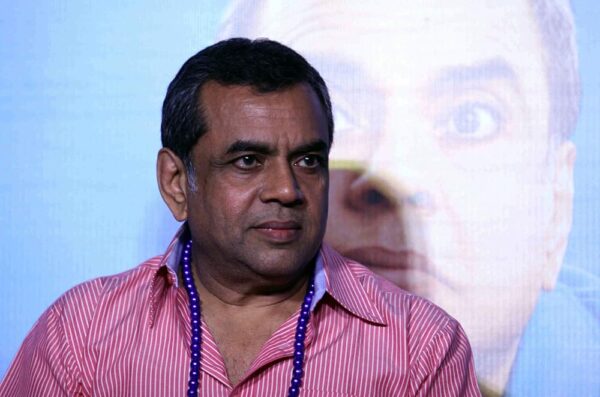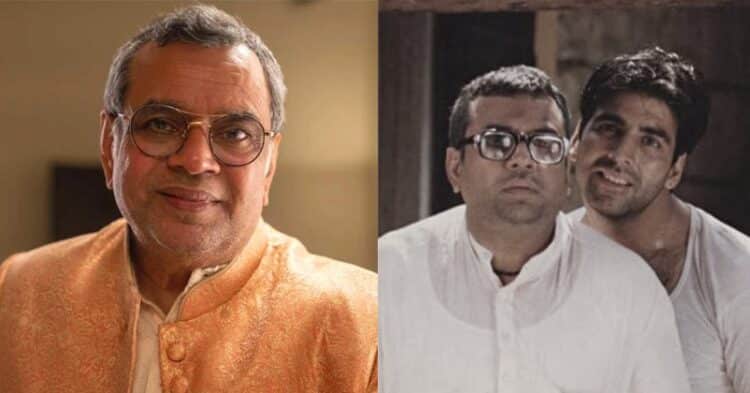The Hera Pheri franchise stands tall as one of the most beloved comedy series of Bollywood. It all began in 2000 with the release of Hera Pheri, directed by Priyadarshan and starring Akshay Kumar, Suniel Shetty and Paresh Rawal.

The film quickly became a cult classic for its brilliant mix of slapstick, clever writing and unforgettable characters — especially Paresh Rawal’s portrayal of Babu Bhaiya, which remains iconic to this day. Its sequel, Phir Hera Pheri (2006), continued the misadventures of the trio, cementing the franchise’s place in pop culture. Now, fans eagerly await Hera Pheri 3, which will reunite the original cast.
In a recent conversation, Paresh Rawal reflected on the surprising roots of the first film. He shared that the plot of Hera Pheri wasn’t entirely new to him — it closely mirrored a Gujarati stage play he had performed over two decades earlier. According to Paresh Rawal, back in 1996, during a story narration by Priyadarshan, he recognised the plot instantly and even completed the climax before the director could finish. The similarity came from Ramji Rao Speaking, a Malayalam film that inspired Hera Pheri, but Paresh Rawal had already brought a strikingly similar story to the stage years earlier under the title Khel.

This play, performed in 1984, featured his wife Swaroop Sampat in a leading role and Naseeruddin Shah as the protagonist, while Paresh Rawal directed the play. The story followed a struggling actor who receives a ransom call by mistake, setting off a chaotic chain of comic events as he and his partner try to exploit the situation. Paresh Rawal revealed that the play was first staged on March 29, 1984 — exactly 25 years before the release of Hera Pheri.

Now, this theatrical gem is being revived under the new name Saanp Seedhi (Snakes and Ladders), with actors Kumud Mishra and Sumeet Vyas stepping into the roles. Even as he continues to entertain on screen, Paresh Rawal’s connection to storytelling across mediums remains as dynamic as ever, bringing the same laughter and legacy to both stage and cinema.




